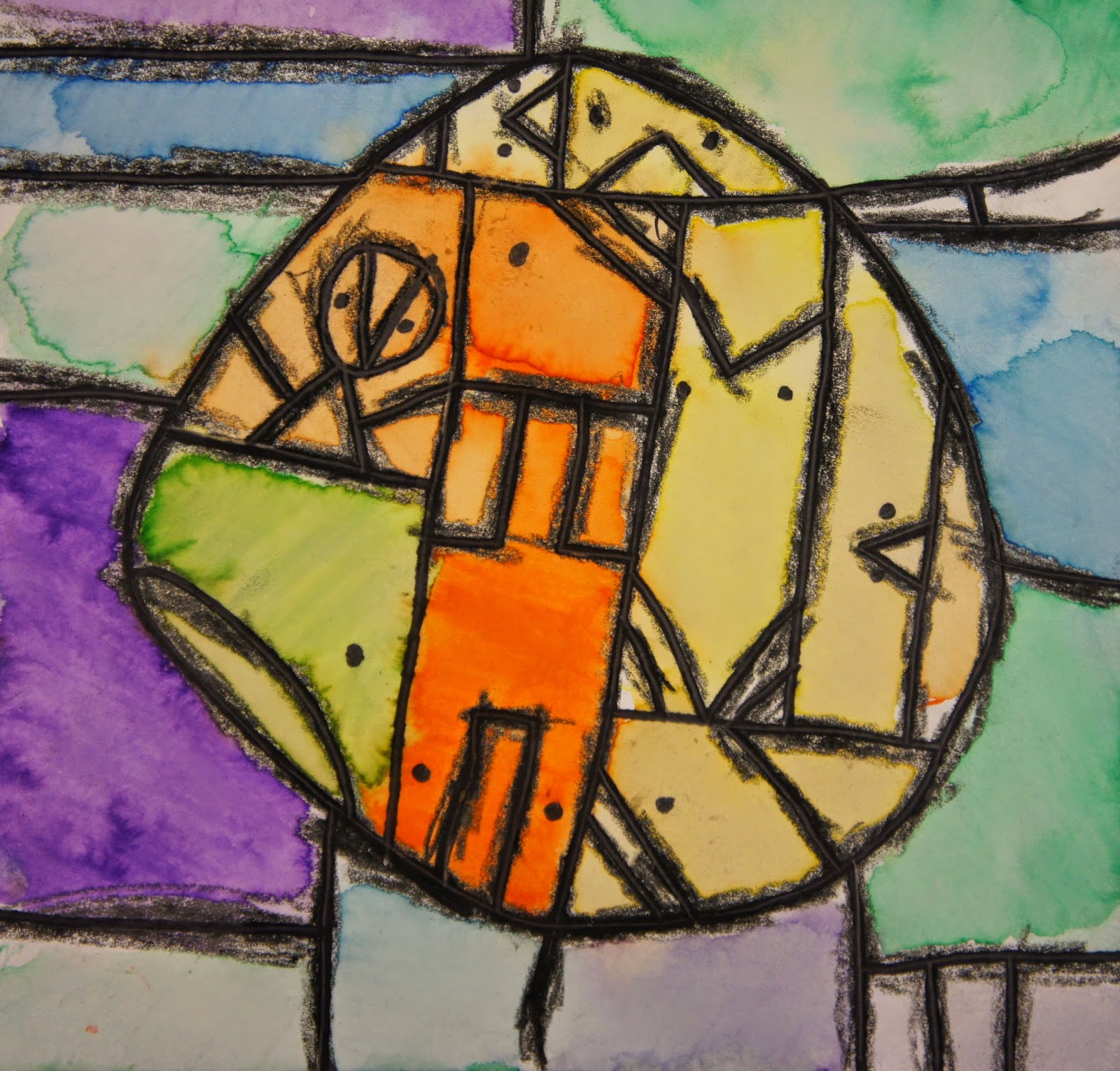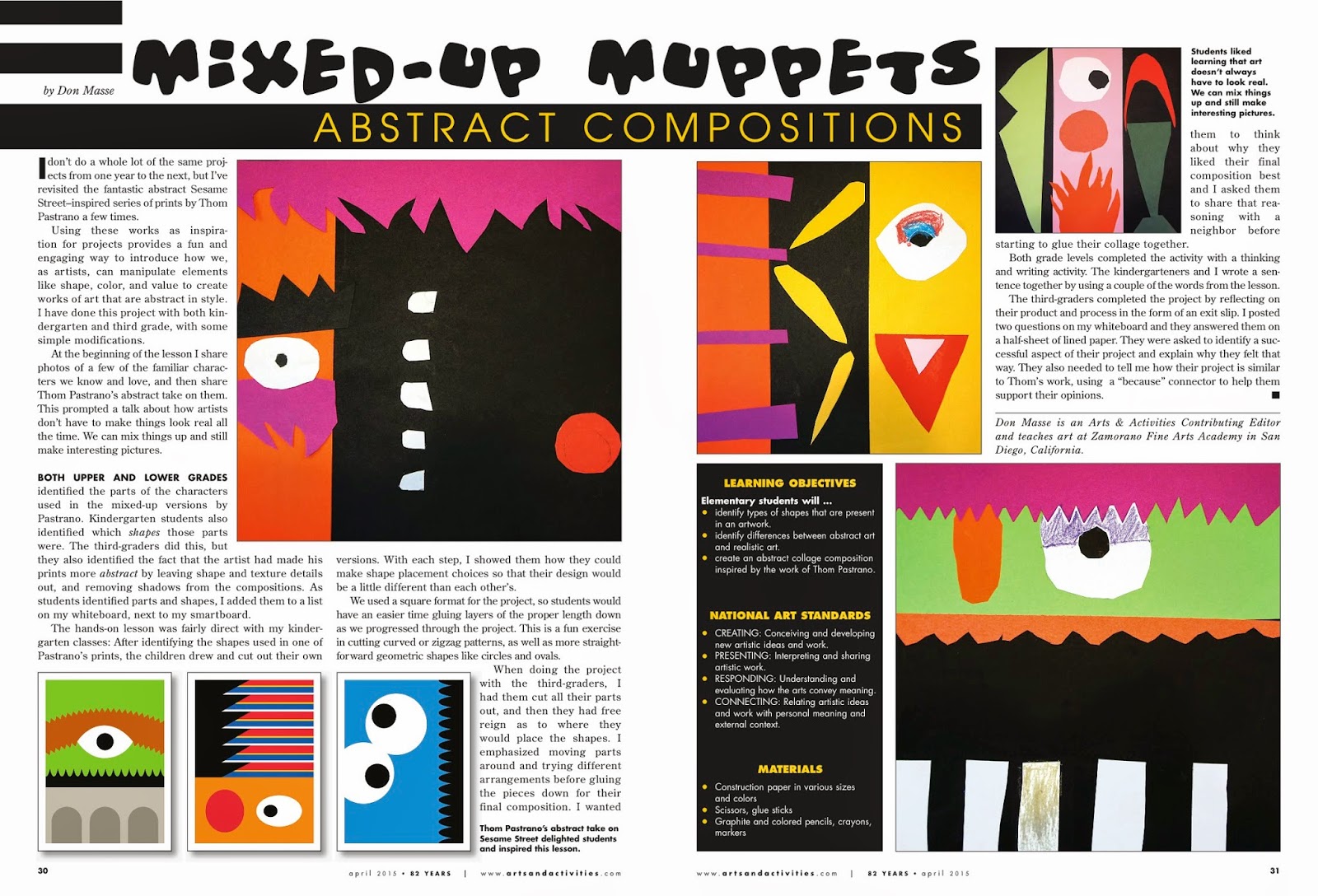I'm beginning to play with visual thinking strategies in my instruction, using it as a warm up, in hopes of having our classroom teachers explore it with their students next year. When I shared this image with the classes, I asked them to quietly look for a minute, then I asked- "What is going on here?" After each response, I paraphrased it, and then asked for more from other students- not what else is there, but "Is there more going on?" Students were able to break down and identify so much about the image, using a great deal of vocab. I'll be continuing this and going further with the approach with each grade level this year. As I've been learning about the approach, the benefits/skills should lend themselves well to other subjects, especially ELA.
Anywho...
Students started their own versions by drawing a large central shape- circle, diamond, or square. They then broke up the shape and the background with verticals and horizontals. They could fill the interior shapes with any characters, any things like wanted. Some went with Don's vocab of shapes, others did their own thing. They traced their lines with black crayons and sharpies to make them bold and strong.
Students used either warm colors or cools inside the main shape and the opposite on the outside. They used crayola washable markers to color.
They went over their marker parts with a wet brush to create a painted effect and to fill the shapes in more completely.
As usual, students completed an exit slip. I asked them to identify how this painting project was similar to their cacti drawings. They also needed to express which one they enjoyed more with a "because" statement.

































































